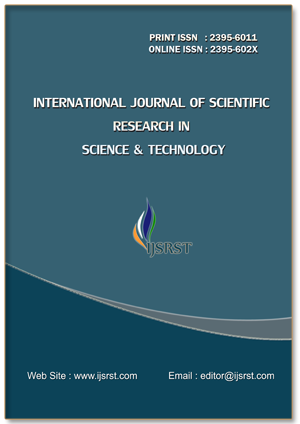Proximate Composition and Amino Acid Composition in the Viscera of Skipjack Tuna (Katsuwonus pelamis)
DOI:
https://doi.org/10.32628/IJSRST241161130Keywords:
By-product, Essential amino acid, Fish waste, Non-essential amino acid, Nutritional value, Proximate composition, Skipjack visceraAbstract
The viscera of skipjack tuna (Katsuwonus pelamis) is often regarded as an underutilised waste in the fishing industry, with approximately 20% of the total weight of skipjack waste being discarded, which presents a cost burden for producers. Although skipjack tuna has been studied previously, the nutritional potential of its viscera as a food source still requires further exploration. Therefore, this study aims to evaluate the nutritional content of skipjack tuna viscera obtained from the fish processing industry. Analysis was conducted on the proximate composition, including moisture, protein, fat, ash, and carbohydrates, as well as the amino acid profile. The mixture and parts of the skipjack's viscera were observed morphometrically. The results of the morphometric analysis showed that the mixture of skipjack tuna viscera has a length of 12.05±0.72 cm and a width of 5.14±0.92 cm, slightly larger than other viscera parts such as the liver, stomach, and intestines (11.86±2.11 cm, 10.86±2.04 cm, 9.94±1.37 cm, respectively). Proximate analysis showed that skipjack viscera contains 91.02±0.33% protein (dry basis), 6.23±0.52% fat, 2.65±0.16% ash, and 0.1±0.03% carbohydrates. A total of 18 identified amino acids consist of 10 essential amino acids (lysine 12.90±0.12, leucine 10.90±0.01, threonine 8.03±0.00, valine 7.49±0.01, isoleucine 6.56±0.04, phenylalanine 5.06±0.04, tyrosine 4.67±0.02, histidine 3.14±0.01, methionine 3.02±0.00, and tryptophan 1.86±0.00 mg/g protein) and 8 non-essential amino acids (cystine 2.07±0.00, proline 7.20±0.00, serine 7.68±0.06, arginine 9.02±0.01, alanine 9.41±0.02, glycine 10.87±0.07, aspartic acid 14.33±0.02, and glutamic acid 19.80±0.02 mg/g protein). Overall, skipjack viscera is a highly valuable source of protein, containing both essential and non-essential amino acids. These findings demonstrate the potential of skipjack viscera to be utilised as a material in the production of enzymes, hydrolysates, and the enhancement of umami flavor in the food industry.
📊 Article Downloads
Downloads
Published
Issue
Section
License
Copyright (c) 2024 International Journal of Scientific Research in Science and Technology

This work is licensed under a Creative Commons Attribution 4.0 International License.
https://creativecommons.org/licenses/by/4.0




